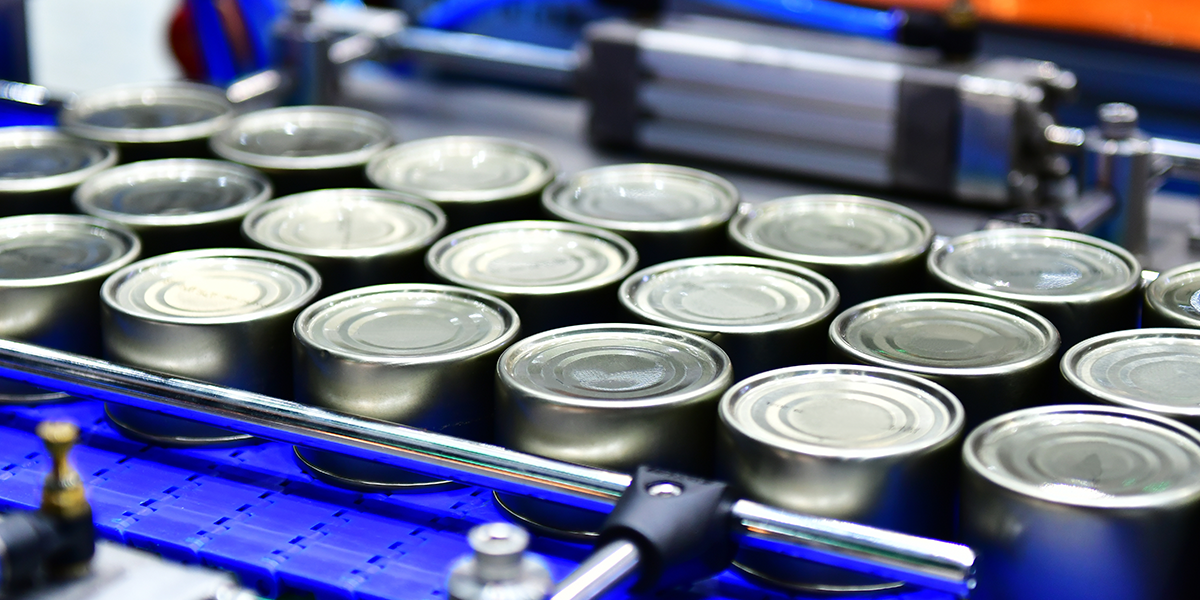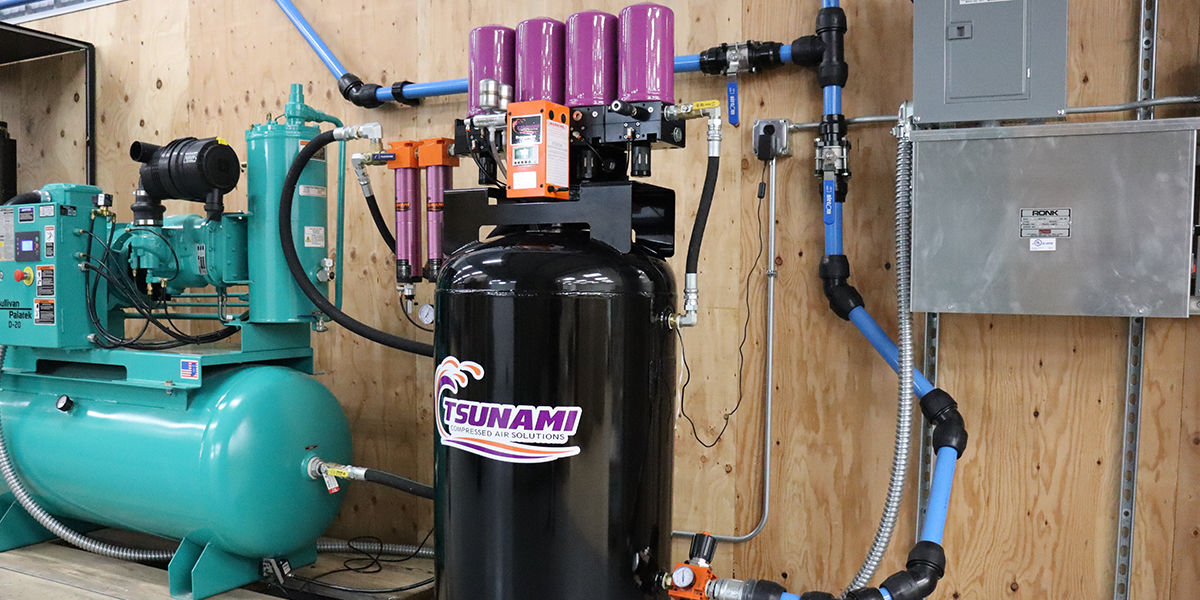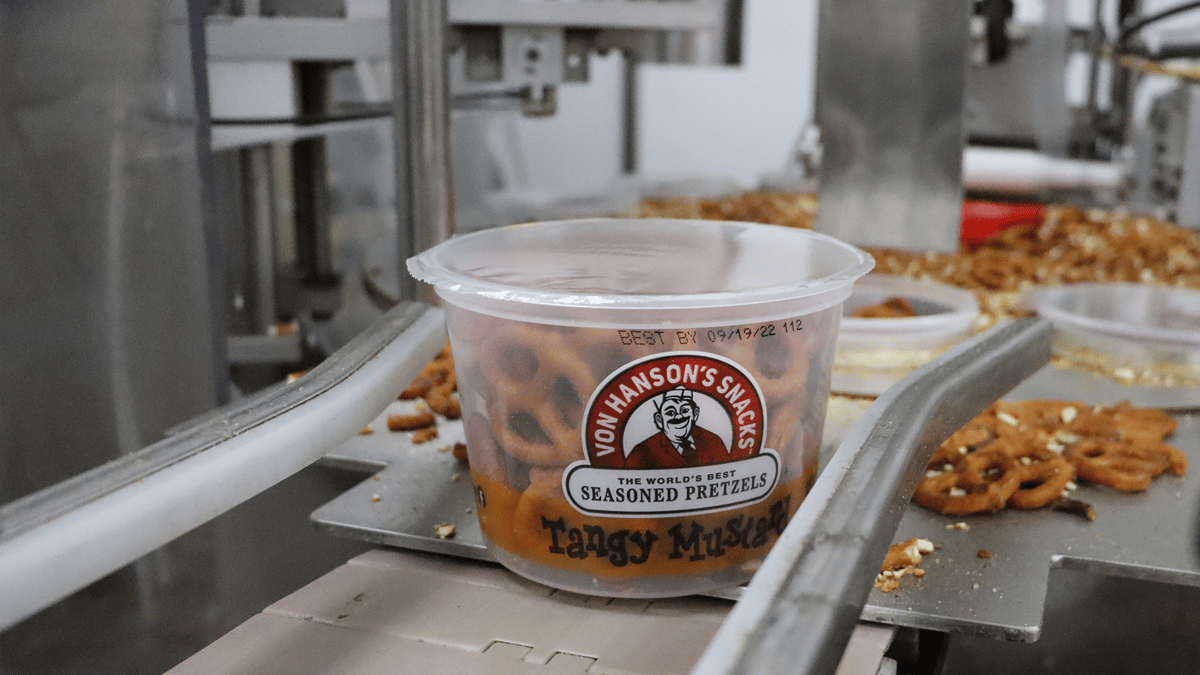4 min read
The Importance of Compressed Air in the Food Industry
Tsunami Team
:
Jun 6, 2024 3:37:22 PM

Safety is of the utmost importance in the food packaging industry, to both sellers and consumers. Compressed air is used to power many of the machines that package our food. These machines must be part of the solution, not a problem that shuts production down unexpectedly.
This means adhering to certain compressed air standards for the food industry to ensure you meet safety requirements and protect consumers from potential contamination or harm. This process means:
- Installation of the right food-grade air compressor
- Regular maintenance for compressed air systems
- Regular replacement of filters
- Careful monitoring throughout the process to ensure the air quality remains at desired levels
By keeping these standards at the forefront of your operational philosophy, you’ll boost uptime and revenue at your food manufacturing facility.
In this article, we will discuss:
- 5 Compressed Air Standards in Food Safety
- The HACCP System
- Why Food Safety is a Priority
- Schematic Resource

5 Sets of Standards for Compressed Air in the Food Industry
Ensuring safety in the food packaging industry is critical for both manufacturers and consumers. Compressed air powers numerous packaging machines, and maintaining high standards for this air is vital to prevent production halts and safeguard consumer health.
Compressed air standards for food safety compliance provide a comprehensive set of safety guidelines, which are established by different agencies in both the U.S. and Europe as part of a Global Food Safety Initiative (GFSI). Below are five common sets of standards in food safety compliance:
1. FDA
The US Food and Drug Administration (FDA) regulates the food and beverage industry and sets compressed air standards for food safety compliance which are designed to protect consumers from potential harm due to contamination. These standards cover many aspects, such as:
- Cleanliness of the air used in food processing: Compressed air must be free from contamination to prevent illness or injury. Standards also require that compressed air is kept dry and at a consistent pressure during use to prevent contamination.
- Air system components that come into contact with food materials: Compressors must be regularly inspected to ensure they’re in good working order and that their air quality is maintained. Compressors must also have alarms installed to alert operators if the pressure is too high or low, or if there is any potential contamination present.
- Regular testing and inspection of compressors: All compressors in the food packaging industry are required to be certified and regularly tested to ensure they meet the highest standards of safety.
Compressed air used in food packaging must pass either through a standard or automated filtration system to remove any potential contaminants before use.
2. ISO
The International Organization for Standardization (ISO) is a global organization that develops and publishes standards for quality in various industries, including the food packaging industry.
The ISO's compressed air standards define acceptable quality and safety, as well as the procedures for inspecting, testing, and maintaining compressors. Compressors must be regularly inspected to ensure they’re in good working order and that their air quality is maintained.
ISO 8573.1 (Testing for Compressed Air)
ISO 8573 was established in 1991 and focuses on three main contaminants in the compressed air system:
- Solid particulate matter
- Humidity and liquid water
- Oil
ISO 8573 outlines the contaminants and sets air quality standards in Part 1. Parts 2 through 9 of the standard focus on compressed air tests specifically intended to measure the full range of contaminants in a facility requiring food-grade air.
3. SQF
The Safe Quality Food (SQF) Standard introduced a compressed air focus in 2012. The updated version in 2014 included expanded best practices for compressed air quality in food applications, including:
- Use of high-efficiency filters at any point where compressed air comes into contact with food (either directly or indirectly)
- Requires air in the final stage of filtration in food-contact areas to be 0.1 microns and 99.99% efficiency-rated
- Locating the filtration as close as possible to the point of use, to reduce piping between the filter and point of contact
- Annual testing (at minimum) of air quality, either by in-house staff or a contracted outside party
4. BRC
The British Retail Consortium (BRC) sets compressed air standards for food safety compliance that adhere to ISO guidelines. These standards are designed to reduce the risk of not just illness but injury as well.
BRC compressed air standards include requirements such as:
- Compressors must be checked and serviced regularly by qualified personnel
- Compressors must be tested for air quality
- Compressors must be fitted with appropriate safety systems
- Compressed air must be filtered before use in food processing
5. FSSC 22000
The Food Safety System Certification (FSSC) 22000 is a global food safety management system that sets compressed air standards for food safety compliance. This certification scheme requires companies to adhere to rigorous standards to ensure safety and quality.
Compressors must be regularly inspected and tested to meet these standards, and companies must prove compliance to achieve FSSC 22000 certification.

Real-Life Application: Check out our case study on how Von Hanson’s Snacks ensures compressed air quality standards are met.
HACCP
Hazard Analysis and Critical Control Points (HACCP) is a system of preventative controls designed to ensure the safety and quality of food products. HACCP is used to:
- Identify potential hazards
- Assess those hazards and the potential impact
- Control the impact of the hazards
HACCP examines the entire production process from raw material to finished product, identifying hazards that could lead to contamination or harm. HACCP helps companies identify and control potential hazards posed by their air systems, ensuring they’re compliant with current regulations.
HACCP involves:
- The critical control point: The most likely potential hazards for food contamination.
- Prerequisite program: Hazards with a low likelihood of occurrence. ISO 22000 specifically requires this component of HACCP.
- Good manufacturing processes: These reduce the risk of contamination and ensure efforts are made to keep food safe for the consumer.
- Sanitation standard operating procedures: Compressed air monitoring and an established maintenance schedule for the filter elements.
Food Safety Is a Fluid Target
Maintaining compressed air quality is important to the protection of the consumer’s health and the manufacturer’s success through safely packaged food products. Guidelines are set and adjusted all the time – your compressed air must adjust as necessary to meet these standards. Regular testing of the compressed air system guarantees air quality for food packaging, and your ability to keep the production line running.
Schematic Outlines for Ideal Air Dryer/Filter Combinations
For more info on the right combination of dryer and filters:
Editors Note: This blog post was originally published in 2023, and was updated in May 2024 to enhance reader experience.

